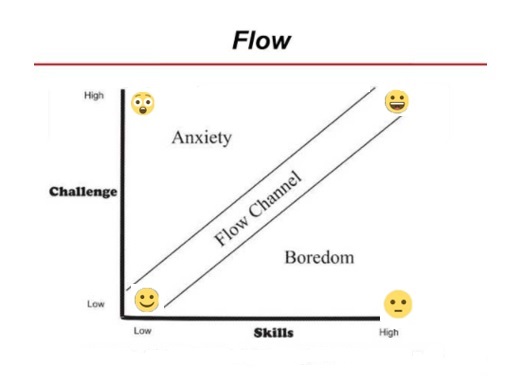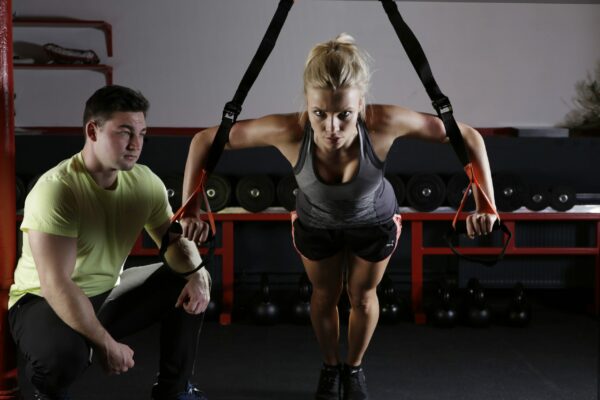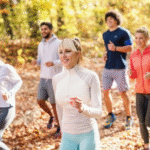The creator of the flow theory is the Hungarian psychology professor Mihaly Csikszentmihalyi. In practice, flow is a central concept in positive psychology, but used- and can be experienced widely in many contexts. How to experience wonderful Flow in Running Training, is about the particular good opportunities when running. We will look at what creates the opportunities and what most often has to be challenged to experience flow in running training.
Mihaly csikszentmihalyi
A definition of flow from mihaly Csikszentmihalyi could be: Flow is a natural, effortless course of our lives in a way that leads us toward harmony and wholeness. We are engrossed in the activity itself and primarily motivated by the process itself, and not by external factors such as reward, prestige, character, duty, punishment, etc.
In practice, it’s about removing our inner resistance/blockages that prevent us from experiencing flow, which already exists in our lives.

Mihaly csikszentmihalyi flow
So, Flow is characterized by being completely present in the activity you are engaged in. Sudden vibrant energy is present and you feel at peace, connected, and happy. In running training the thoughts are neither in the training nor away from the training. It is more of a feeling of pure experience.
Flow experiences have been linked to improved performance, accelerated learning, skill development, and providing greater motivation for more training. It makes good sense once you have tried being in the flow, whether it is by running, swimming, on the bike, on the Pilates team, or in other learning situations.
Mihaly Csikszentmihalyi – How Is Flow Achieved?
Flow occurs when there is a complete balance between your experienced challenge and your experienced abilities /skills as shown in figure 1
below:

As the figure shows, we must try to aim for a match between our prerequisites and the degree of difficulty of the task. There is nothing wrong with either boredom or anxiety – in small amounts – but in a specific training situation, it is crucial that we mostly experience a match between challenge and skills.
What Creates Flow When We Run?
When we want to promote the opportunity to experience flow during running training, we can appropriately look at what we could call flow triggers, i.e. conditions that promote flow states. Calm and inaccessibility belong to the group of “flow triggers”, i.e. flow-promoting factors.

Below is a list of possible flow triggers:
- Clear goals. You know the clear goal of your running training and the goal is understandable.
- Something is at stake – you are challenged. The activity is meaningful, it means something. There is a point with what you do.
- Absence of distracting factors. For example, you will not be interrupted by text messages, emails, Messenger messages, calls, and similar things.
- A high degree of inner motivation. You like what you do and are committed.
- Feedback – You should receive ongoing feedback on how things are going – as needed.
- A balance between capacity and challenge, i.e. The flow zone. You can meet the challenge by doing your best.
- Manageable, understandable, and precise framework and rules. You know what to do and how to do it.
The balance between capacity and challenge
A very crucial factor for entering the flow zone as shown in figure 1 is flow trigger number 6, the balance between capacity and challenge.
We know that modern stress- and performance culture create problems for many in terms of thriving and being in the flow. For example, a certain amount of calm (absence of disturbances) and inaccessibility (sustained concentration) is necessary to experience both well-being and flow. Too much unrest disturbs the opportunity for flow experiences.

You will probably already be able to find some activities where you do not experience flow. This will often be due to one or more of the following factors:
- You do not have the opportunity to adapt the challenges to your skills
- The activity does not provide an opportunity to take independent initiatives
- The activity does not contain specific, energizing goals
- The activity does not allow you to experience progress or how well you are doing it
- The activity contains distracting factors that make it difficult to get involved and immerse oneself in it
Opportunity To Adapt The Challenges To The Skills
It is important that you start your training at a level where the challenges you choose are only slightly greater than your skills or in a way that matches the balance, so you aim to train in the ‘Flow zone’ as shown in figure 1 above.
The main purpose is that you get some good training experiences from the beginning and then slowly build up your challenges over time.
For example, if you are a member of a running club, you automatically join a team that matches your level, get an introduction to the training and your coach also makes sure that there are variations and development in the training.
But make sure to adapt your challenges to yourself and avoid increasing your running intensity to impress others. Then you increase the risk of overtraining, which also can move you up in the anxiety field in relation to flow – you now have to live up to something that you are not ready for in the long run.
Opportunity To Take Independent Running Training Initiatives
Maybe you want to run alone, use a personal trainer or you know an experienced runner who can make a training program for you. You can also choose to become a member of a running club, where much of your training is planned by a Coach and where you have regular meeting times several times each week.
However, it must be possible for you, in your chosen framework, to take independent initiatives such as having the opportunity to cancel the training or adjust the training intensity.
You must also be able to adapt the level of difficulty to your specific skills. It’s easy in a running club because you start in a group matching your current level of running and the coach will keep an eye on you.
If you lose the opportunity for self-determination in your training, it becomes more difficult to achieve flow. However, this does not mean that you cannot benefit and enjoy a Coach/person who drives you to keep on running and complete the training – most of us can benefit from this – but you must be able to say no from time to time.
Specific, Energizing Training Goals

When you need to set goals, such as running a half marathon 4 months from today, it’s important that it’s a specific and energizing goal. For that purpose, you can use the SMART Model. When your goals are both energizing and attractive, it means that it gives you a good feeling and a smile on your face.
Maybe the road to a goal will be tough, but the process itself will give you energy and surplus. When it comes to the running training itself, specific and energizing goals can be set them up as a percentage of your max. running intensity.
When you run long calm runs (LSD), the goal could be to complete with 70 – 75%, and in interval training, it could be to complete the intervals with 80 – 90%. Then you know what to work towards.
Clear And Specific Feedback On Your Training Performance

Most of us need specific feedback on our training in general, as in the picture above. It provides an opportunity to assess whether we train optimally. You probably experience it in the same way. Depending on your goal, there may be more opportunities to experience progress in running training. Two of them are:
Test run
The test run is when you find a route that fits your current running level and uses a sports watch or another device that can map your chosen route. When you run the route for the first time, you have a start and end time on your device as well as a lot of other data.
When you get home, you upload the data to e.g. Garmin connect, which is a connecting system that allows you to view activity data collected from your various devices, as well as personalize and change in tracking and activity settings.
There are many training parameters that can show your progress such as time, heart rate, calorie consumption, etc. Over time you will thus be able to see the progress there has been such as a lower average heart rate and a faster finish time.
You can also choose to make it simpler by finding a suitable running route that takes you ½ – 1 hour to complete.
When you run the route for the first time, just use a stopwatch and note your finish time. Two months later in your training period, you run the route again and note the finish time.
The difference between your finish time two months ago and your finish time today will show you whether you have progressed or you have to make adjustments in your training. You can also measure your resting heart rate as soon as you wake up in the morning. Over time your resting heart rate drops when you train persistently in the right way.
– As you see technology can give you specific feedback too.
Running club or running buddies
By Running in a running club or with your running buddies, you can always ask for feedback from either your coach or your running buddies – it will be natural for them to give specific feedback and they also have an external view of your running skills and style.
Also, remember that a bad test result or a bad day does not necessarily have to affect your motivation. You can choose to see it as a chance to optimize your training and find out why your result was bad or why you had a bad day.
Maybe you have eaten wrong, slept badly, been pressured at your job, trained too much without the necessary restitution, or something completely different. We only learn from our mistakes and poor results are therefore your opportunity to look inward and reflect.
No matter what you choose as feedback, it’s important that the feedback you receive is specific and related to your goal. It ensures motivation. It’s therefore also important, that you ask or shares results for feedback to others if you need it and from the right people.
Distracting Factors In Your Running Training

If you want to get in to flow, you need to be able to remove the distracting factors. If you use your new knowledge, you will most often know how to deal with distracting factors and instead get the necessary calm for your running training.
In daily training, it can be about turning off the mobile phone and keeping the focus on what you have started with, and ensuring that the environment you are in is motivating for you, whether you run alone on one of your selected running routes or together with others.
The point is that you have control over what there are around you, so you can find calm and focus.
Is There a Recipe For Flow In Running Training?
Flow is volatile and if you try to get into flow by using thinking, then it does not happen. Flow is a state where thoughts are absent. But there are different things you can do to achieve the best conditions for getting in to flow:
Go for the joy
There are many different ways to train. In terms of flow, some of them are more efficient than others when it comes to specific objectives. But a good method and the best choice would probably be “Go for the joy”.
When you love to run long distances but hate cycling, then it will be difficult to reach a state where you just forget the time and place by cycling. It will thus be easier and make the road shorter to reach flow and thereby be present in the now when you run long distances (LSD).
Find the balance between the challenge and your Self-confidence
When we train, it’s okay not to have huge self-confidence. Many of us haven’t had good experiences with training, with minor injuries as a result of the training has not been the experience we expected. It can create many images of training, as something that did not succeed for me, etc.
Therefore, it is very important that you dare to acknowledge where you think your level is. If you think you should start out walking 2-3 km twice a week, and you have an experience that it is your current level.
Then you will succeed. You increase the challenge over time as your self-confidence increases and your body gets adapted and used to this current level.
You must dare to challenge yourself
To get progress in training, you need to increase the challenge when it becomes too easy for you. Both because it does not load the body for new development but in particular because your thoughts have so much free space that they can fly to all sorts of places while you train. In that way, it’s difficult to be present in the now.
So, if you find that you have a surplus to think about your work, what you should have for dinner, and what is coming on TV, then it could be a sign to increase the challenge.

My own experiences of flow by long distance running training
“I’m out running alone on a cold and dark November evening. I run and nothing else and just feel that I am warm in the body, that it is cold weather but I do not think about it. I’m not really thinking about anything at all. It’s like the rhythm controls itself and my body just moves.
Everything happens synchronously at just the right time; breathing, leg and arm movements. I move forward with ease. It’s free and easy. However, it is not easy for my fitness because I am challenged but I am just not aware of it. I’m actually not aware of anything.
I run, the body moves by itself and things happen as if I have put myself on autopilot. My thoughts are nowhere, I’m just in it now and here.
Suddenly a thought comes in from the right, as a car passes on the road at high speed and I’m back again and can feel that it’s actually quite hard, but It’s okay because I can remember how it was just before.”
It is not easy to describe flow in words for me, but I actually believe that experiences like this made me continue to run in the many years since then.
Flow is also something we can experience in a group. For many years I ran every Sunday with my running buddies.

Running in nature areas
Our routes were 21 – 25 km in free nature areas. After running for about ½ – 1 hour it’s like the internal resistance removes and we start talking freely and very engaged in the group about things, we would not really talk about in our ‘everyday life.
It’s like we are connected and have a free space to talk about whatever it must be – like personal stories, challenges, etc.
Final Thoughts
Running training does not have to be bad and a necessary thing just because it is ‘good for me’. It can be an amazing experience that fills you with joy and energy just by doing it.
There are so many other gains by running – like flow experiences – as many of us are not aware of from our current points of view in life. Unless of course we start and continue running long enough.
I hope you get something out of this post and if you have any questions about the topic or want to leave your own Personal review, please leave a comment below.
[faq-schema id=”2926″]






Hello there! Thank you very for sharing this article on how to experience wonderful flow in running training. I must say, I really did enjoy going through this as it contains valuable information one can hold on to. I love running and it’s a very wonderful experience for me. I’m yet to notice the flow experiences, maybe because I didn’t really take note. I’ll be more aware now, thanks for sharing.
Hi Sophie
Thank you for the comment. Happy that you find value in reading this article. If you love running as you write, you have probably been in flow at times. Flow is about the process – it’s a state. Awareness is the keyword as you know.
Be Well
This is the first time I have heard of the flow theory related to running. I do experience flow in other areas of my life including my workout routine. Eliminating inner resistance in any area of life is important. Those are all very important triggers that you mentioned to get the flow ignited. Also finding the right balance is critical. It pays big dividends to challenge ourselves.
Hi Joseph Stasaitis
Thank you for the comment. – You have good points here and being aware of flow triggers, can be very beneficial in moving up higher in the flow channel.
Be Well
Hello Henrik, thank you for sharing this truly informative and eye opening article about Flow. This is my first time hearing of the term but I really enjoyed reading about it in your article. I think it’s something that can be applied to all facets of life but most importantly running. The ability to do without inhibitions is goal worthy.
Hi Sean
Thank you for the comment. Yes it can be used in many other contexts – like when we learn something new in a school . Flow is an optimal state of mind and body with no ‘inner’ resistance. It’s therefore, easy to reach your personal goals. Running is natural for us and you don’t have to think when doing it.
Be Well
I think running has it’s advantage and disadvantages. You like running because it creates the FLOW you are comfortable with. I like weightlifting because it balanced out my body with strength, muscle retention, bone health. I feel great overall. I don’t know if this count as my Flow. I only do burst running. I used to run for many miles in the Armed forces. I did two miles at 10 minutes flat. But I find it not beneficial as I got older. There was an article that claim that fast paced walking or walking a few miles a day is equal or better than running in general. Your article is making me think differently about how I view running. Thanks for an interesting article.
Hi John Keldon
Thank you for the comment. If you ‘feel great overall’ then you have probably been in the flow channel! It’s about finding the right balance between the challenge and your abilities/skills. In fast paced walking you are maybe in the lower part of the flow channel (According to figure 1).
Be Well